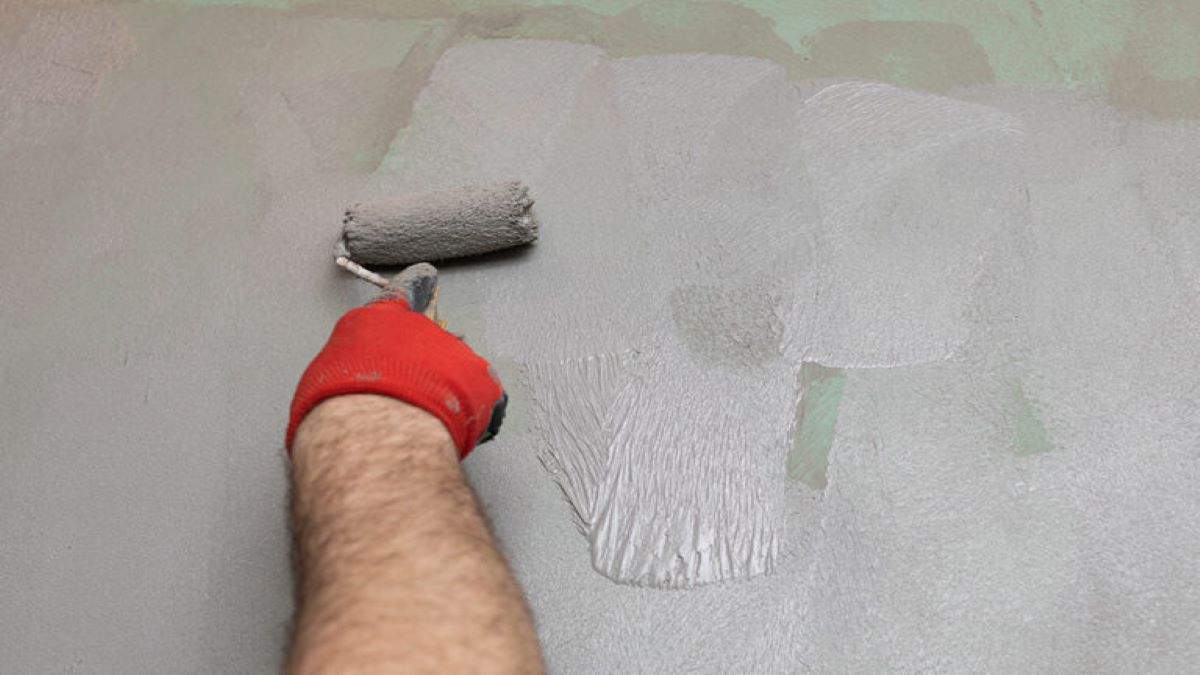
September 25, 2020
Insulative paint can be applied to the interior and the exterior walls of a building to increase the thermal insulation. Any structure that separates the outside and the inside of a building is called the building envelope which includes the foundation, walls, insulative layer, roof, windows and the paint.
Insulative paint is a new technology, alternative to regular paint, designed to increase the insulation of a building. It contains ceramic and glass microspheres that have low thermal conductivity (λ) and high thermal insulation (R) values. It is more often applied to the inside walls of a building, but it can also be applied to the outside. This article will discuss whether insulative paint is an effective insulator and a better alternative to regular paint.

Image 1. Illustration of the interior walls of a room painted white.
The building envelope is constructed to reduce heat transfer and noise pollution. It is insulated to prevent the warm outdoor air entering the building in warmer months and warm indoor air escaping the building in colder months. The insulating property of materials is useful for solving everyday life problems. Some examples are: to keep food and drinks warm, to keep the human body warm with insulated clothing, and to regulate indoor building temperatures.
Insulative paint is an innovation that can aid in regulating indoor building temperatures. It is not a replacement for properly insulated building construction, however it does help. It is foremost essential to have a strong building envelope which includes thick walls, insulation layer and proper windows.
The R-value (thermal resistance) indicates the strength of insulation. The thermal resistance of an object can be calculated with the following formula:

where
L= thickness (meters),
k= the thermal conductivity value [W/(m⋅K)],
A= cross-sectional area (m²)
The insulation of a wall is directly proportional to its thickness (L) and it is inversely proportional to the combined thermal conductivity value of the materials that make up the wall (k) and the cross sectional area (A) of the wall. Therefore, smaller and thicker walls made up of materials that have low thermal conductivity values are most insulated.
A cube would be more insulative compared to a rectangular prism (if they are the same height and made up of the same materials). Large walls that are thin and made up of a highly thermal conductive material would provide minimal insulation even if insulative paint was applied.
A thermal envelope with proper insulation is necessary to have energy efficient buildings. This kind of paint can help by increasing the overall R-value by decreasing the k-value and increasing thickness (L) of the wall slightly.

This kind of paint should increase the R-value of a building as discussed, hence it is a technology worth exploring although there are some studies opposing its effectiveness. This is because it is a relatively new technology resulting in a lot of debate. Below are two studies providing evidence for the effectiveness of insulating paint.
A study conducted in 2015 investigated the thermal insulation of a room with interior walls coated with paint containing ceramic microspheres. This study tested whether paint containing ceramic microspheres could be a solution to fix uneven temperature distributions within a room. A balanced distribution of heat within the indoor area is important for the comfort of inhabitants. Typically, the warm air rises up to the ceiling leaving the cooler air below where the inhabitants are. This results in them increasing the temperature of their apartment to achieve their desired comfort. This would not be necessary with a more balanced heat distribution inside the room.
Two rooms with identical dimensions and building envelope construction were used in this experiment. The interior walls of one room were coated with paint containing ceramic microspheres. The interior walls of the other room were covered in vinyl-cloth wallpaper. For two years, during summer and winter months, the following parameters were tested for: room temperature, humidity level, energy consumption during HVAC (heat ventilation and air conditioning), thermographs, skin surface temperature and subjective thermal comfort feedback from participants.
The insulation value for the clothing of the participants were also tested to account for bias. The results indicated that the room coated with thermal paint did not have more ideal temperatures for summer/winter. However, there were less temperature fluctuations for the room with interior walls coated with paint containing ceramic microspheres. The participants indicated higher thermal comfort for this room which could be a result of less temperature variance.
Another study conducted in 2014 indicated that paint containing ceramic microspheres increased the insulation of a building and that this could help in cutting down energy costs for heating/cooling. This experiment was done using three iron boxes whose interiors were coated with paint containing ceramic microspheres, regular paint and highly reflective paint.
The thermal resistance values (R) were calculated to be 0.0100 (K·m2/W), 0.008 (K·m2/W) and 0.0016 (K·m2/W) respectively. Therefore, the box coated with thermal paint had the highest R-value, the box coated with regular paint had the second highest and the box coated with reflective paint had the lowest R-value. The thermal paint had 12.4 times more insulation than regular paint. It was also found that there is 16% less heat loss with thermal paint compared to regular paint.
Insulating paint is a new technology designed to further improve the thermal insulation of buildings. It is necessary to have a strong building structure made with insulating materials to protect the building from heat loss in cold climates and heat gain in warm climates. New varieties of paint can be tested by consumers. Insulating paint is useful for increasing the R-value. Further research and studies would need to be done to learn more about the uses of this kind of paint.
Insulative paint or thermal paints are decorative coatings that can aid in regulating indoor building temperatures and improve the thermal performance of a surface.
It is not a replacement for properly insulated building construction, however it does help.
Bibliography
Oda, T., Nakai, T., Toba, K., & Jianbo, H. (2015). Measurement of Amenity in Buildings Interiors Coated with Ceramic Insulating Paint. Procedia Manufacturing, 3, 1728–1733. doi: 10.1016/j.promfg.2015.07.488
Oda, T. (2014). Evaluation of the Energy-Saving Performance of Heat-Resistant Paint. Science Journal of Energy Engineering, 2(5), 53. doi: 10.11648/j.sjee.20140205.11
Author: Selen Yildir | Junior Technical Writer | Thermtest